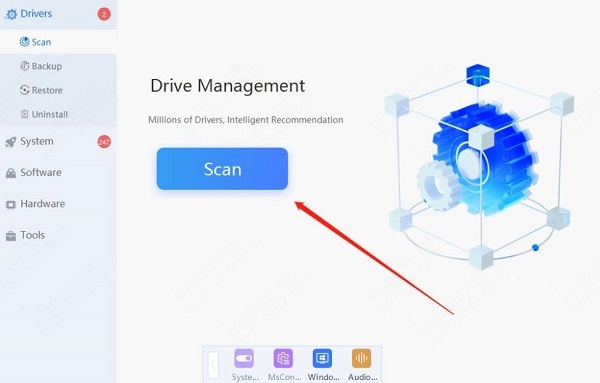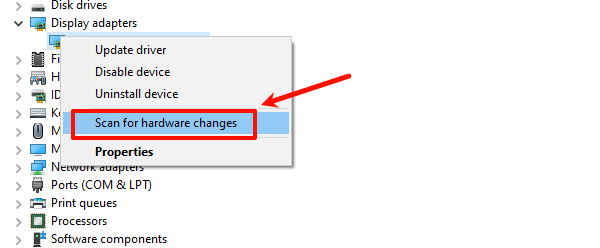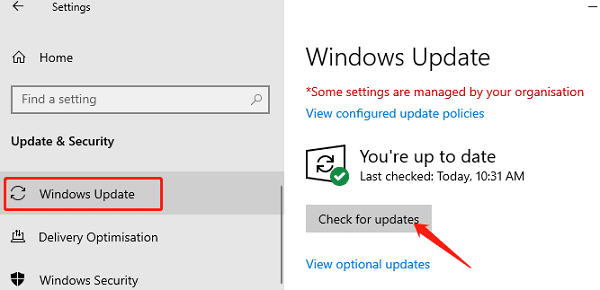
If Windows can't detect your AMD graphics card, you might face performance issues, poor image quality, or app problems. Here are some solutions to fix the issue and ensure your AMD graphics card is properly installed.
1. Check Hardware Connections
Shut down your computer and disconnect the power.
Open the case and ensure the AMD graphics card is fully seated in the PCIe slot.
Confirm that the auxiliary power cable for the card is connected.
Restart the computer and check if the issue is resolved.
2. Update AMD Graphics Driver
Outdated or corrupted graphics card drivers can prevent the system from detecting the card. It is recommended to use Driver Sentry to automatically check for driver updates, saving time and reducing the risk of downloading or installing incorrect drivers.
Click the download button to get the latest version of Driver Sentry. After installation, open the software and click "Scan".

After scanning, it will display which drivers are missing or need updating. Find the AMD graphics card driver in the results list and click the "Update" button.
After the update is complete, it is advisable to restart your computer to ensure that the updated drivers are properly applied.
3. Enable AMD Graphics Card
Open the "Control Panel" and select "Power Options".
Click "Change plan settings" next to the current power plan.
Choose "Change advanced power settings".

In the pop-up window, expand "Switchable Dynamic Graphics" and ensure both "On battery" and "Plugged in" are set to "Maximum Performance".
Confirm and save the settings, then restart your computer.
4. Use Device Manager
Press Windows + X and select "Device Manager".
In Device Manager, expand the "Display adapters" section and find your AMD graphics card.
If the AMD card is not visible, right-click on "Display adapters" and select "Scan for hardware changes".

If it still doesn't appear, right-click in the empty area and choose "Show hidden devices".
Once the card is visible, right-click on it and select "Enable device". If it's already enabled, try selecting "Update driver".
5. Reset BIOS Settings
Restart the computer and press Del or F2 to enter the BIOS settings (the key may vary depending on your computer's brand).
In BIOS, locate settings related to graphics cards, usually under the "Advanced" or "Chipset Configuration" menus.
Ensure "Integrated Graphics" or "Dedicated Graphics" is set to "Auto" or "Dedicated".
Reset all BIOS settings to default or select "Load default settings", then save and exit BIOS.
Restart the computer and check if the graphics card is detected.
6. Check Windows Updates
Press Windows + I to open "Settings" and select "Update & Security".
Click "Check for updates" to ensure your system has all the latest Windows updates installed.

Some updates may include patches or drivers for graphics cards, which can help the system detect the AMD card.
After installing all available updates, restart the computer and check if the issue is resolved.
7. Check Graphics Card Compatibility
Visit AMD's official website to verify that your graphics card model is compatible with your Windows operating system.
Ensure your motherboard supports the graphics card and that your power supply can meet the card's power requirements.
If the card is incompatible, you may need to update your motherboard's BIOS or replace the graphics card for compatibility.
If there are multiple PCIe slots, try inserting the card into a different slot to rule out hardware issues.
Following these steps should help resolve the issue of Windows not detecting your AMD graphics card. If the problem continues, contact AMD support or check for hardware issues. Keeping your drivers and system updated can help prevent future problems.
See also:
Star Wars: Outlaws PC Configuration Guide
How to Fix Monitor Color Distortion